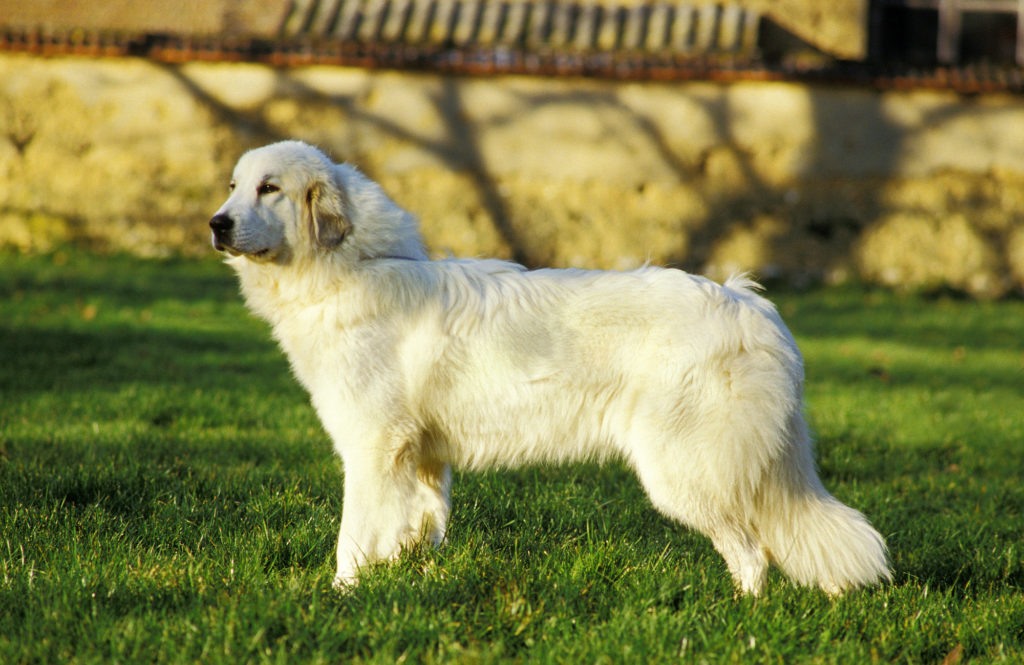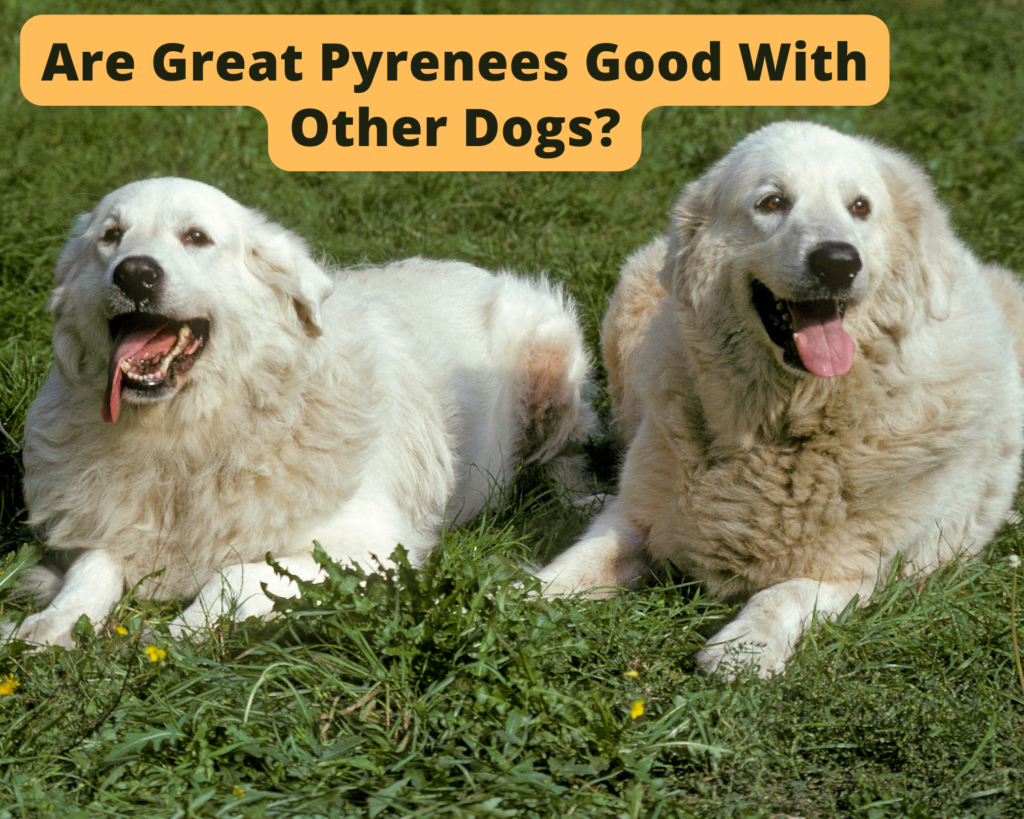Great Pyrenees are strong-willed and gentle dogs that have been around for centuries. Originating in the Pyrenees Mountains on the border of Spain and France, shepherds and farmers bred these fluffy and majestic dogs to protect sheep and other livestock from predators such as wolves and bears.
Since Great Pyrenees are known for being guard dogs, you may want to know if they are good with other dogs.
This article will dive into the nuances of that question!
Are Great Pyrenees Good With Other Dogs?
Great Pyrenees can get along with other dogs as long as they have a sweet temperament and are properly trained and socialized with other dogs from a young age.
Like people, Great Pyrenees have different personalities, which will determine whether they can live with other dogs or if they should be the only dog in a household.
Reasons Why Great Pyrenees Can Be Good With Other Dogs
While Great Pyrenees are strong and protective dogs, they are known for having affectionate temperaments and a calm demeanor.
They are also loyal to their owners and make great family dogs as they tend to get along well with children and other pets.
Since Great Pyrenees are natural guardian dogs and were bred to protect farm animals, they are used to being in close proximity and around all different types of animals.
This history means many Great Pyrenees can easily adapt and live with other dogs.
Reasons Why Your Great Pyrenees May Not Be Good With Other Dogs
Many factors can contribute to your Great Pyrenees not getting along with other dogs.
If your Great Pyrenees has had negative interactions or experiences with other animals before, it could lead them to be aggressive or hostile toward new pets that they meet.
Great Pyrenees are also very independent pups and can be pretty stubborn.
If you do not adequately train them, their protection instincts can come out, and they can be aloof or even aggressive towards strangers and animals they do not know well.
It is essential to start training your Great Pyrenees as young as possible for these reasons.
The size, age, and gender of a dog can also affect your Great Pyrenees’ attitude toward them.

Some pups get along fine with female dogs but are hostile toward males, while others are aggressive toward puppies.
Some Great Pyrenees’ do not like small dogs, while others are hostile towards big dogs.
It is all dependent on your individual dog’s personality and life experience.
If your Great Pyrenees has an aggressive temperament or shows signs that it is uncomfortable or threatening towards other animals, then it is best if it does not live in a home with other dogs or pets.
Ways To Help Your Dog Get Along With Other Dogs
There are many ways you can help your Great Pyrenees so that they feel comfortable around other dogs and have positive relationships with new dogs they meet or pups that live with them.
Socialization From an Early Age
If you get your Great Pyrenees as a puppy, they must be exposed to new environments and different dogs during the socialization and juvenile stages of puppyhood.
The socialization stage starts when your puppy is three weeks old, while the juvenile stage ends at six months old.
Your dog’s interactions and experiences during these critical stages will help determine its personality and temperament.
Socialization from an early age will help make your Great Pyrenees comfortable around other dogs and help them learn how to interact with them positively.
Training
Great Pyrenees are large dogs that also can be quite stubborn. It is crucial to train them as early as possible for these reasons.
Many Great Pyrenees benefit significantly from obedience classes, though it will require patience to train them as they have a mind of their own.
If you have adopted or rescued an older Great Pyrenees, training is also essential in case your pup did not have proper exposure to other animals from a young age.
Positive Exposure to Other Dogs
While you cannot control every interaction your dog has with other animals, you can try and limit negative experiences.
It is important not to expose your dog to other dogs that are not well-trained or aggressive.
Negative interactions like these could lead to your Great Pyrenees becoming fearful of other dogs or even leading them to become aggressive themselves.
Daycare or Puppy Play Dates
One way to expose your dog to positive experiences with other dogs is through daycare or puppy classes.
Putting your pup in daycare while you work is an excellent way for them to interact with other dogs. If you have a puppy, then finding a puppy class is also a great way for them to gain socialization skills.
Make sure you research the daycare and classes and that they have a positive reputation and good reviews from other dog owners.
If you have friends or acquaintances that have well-behaved and trained dogs, you can also arrange puppy play dates.
By exposing your Great Pyrenees to different types of dogs in different environments, you can help build their trust and confidence with other animals.
How To Properly Introduce Your Great Pyrenees To A New Dog
If you decide to get a new dog to live with your Great Pyrenees, you will want to make sure they first have a proper introduction.
It is best to have a friend or family member assist you and have the dogs’ first meeting in a neutral area such as a park or a friend’s backyard.
You will want to have both dogs on leashes and allow them to greet each other by sniffing one another.
Look for positive body language like wagging tails and cut the interaction short if either dog exhibits tense or aggressive behavior.
If this encounter is successful, take them on a walk together. By having a proper introduction between both dogs, they can start getting to know each other and forming a relationship.
Conclusion
Great Pyrenees’ can get along with other dogs as long as they have the proper temperament, training, and exposure to other dogs from a young age.
By following the tips outlined in this article, you will know if your Great Pyrenees has the right temperament to live with another dog and how to help them have positive interactions with other animals.

